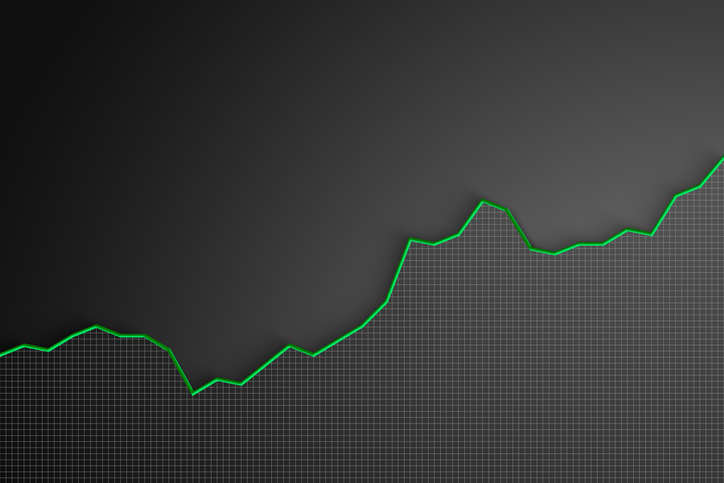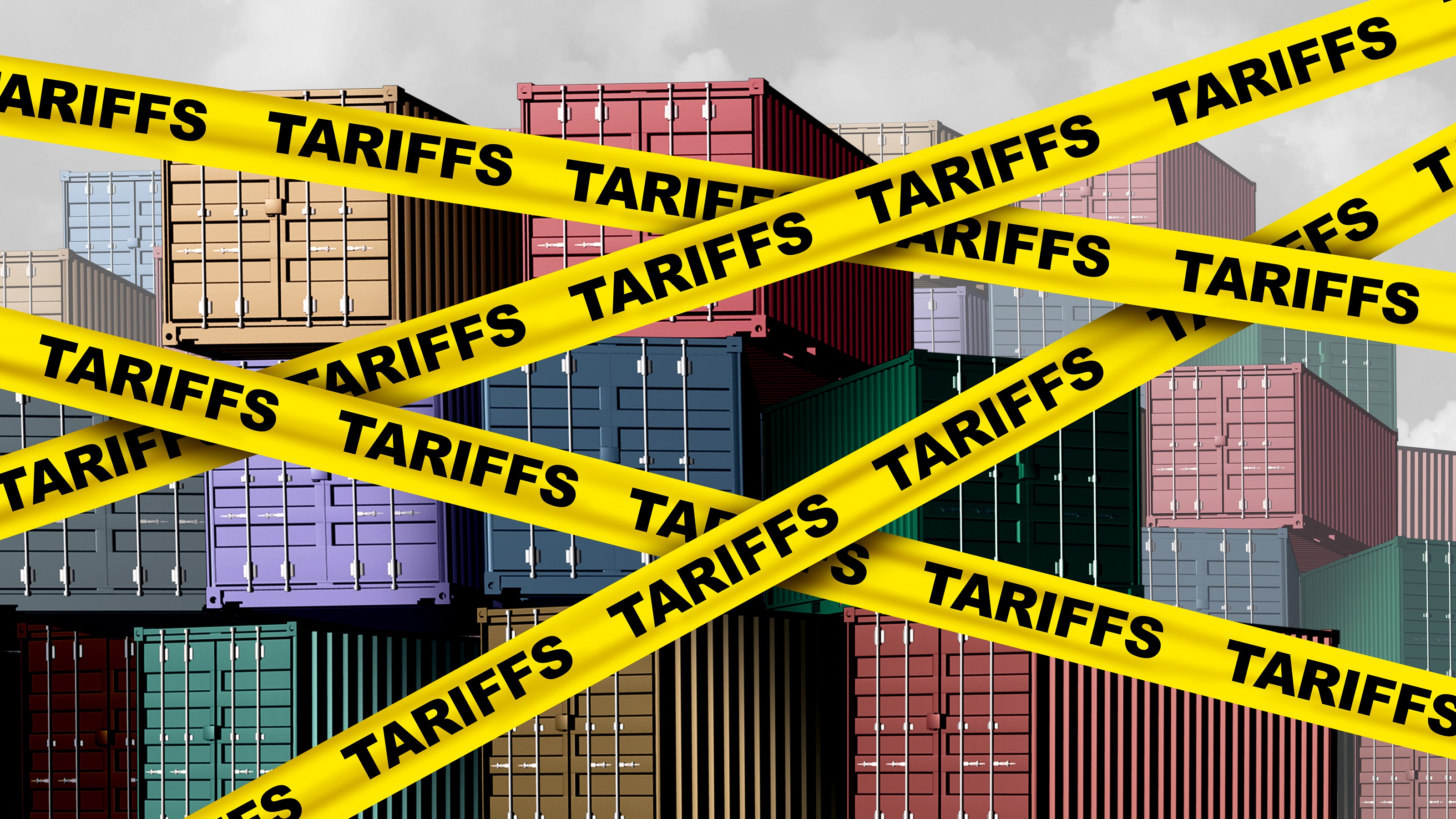Stocks Are Risky – But Avoiding Them Can Be, Too
Without stocks, your retirement portfolio may not grow as fast as prices rise. With inflation at 3%, the $100,000 you have available to spend today could be worth less than $48,000 25 years down the road.


Anyone who’s ever invested in the stock market — or even thought about it — should know there’s risk involved.
While you potentially can make a lot of money, you also potentially can lose a lot.
Stocks are just inherently more volatile than other investments such as bonds or cash instruments. Even a portfolio with only half its assets in stocks potentially could lose more than 22% of its overall value in at least one year.

Sign up for Kiplinger’s Free E-Newsletters
Profit and prosper with the best of expert advice on investing, taxes, retirement, personal finance and more - straight to your e-mail.
Profit and prosper with the best of expert advice - straight to your e-mail.
So as you enter or near retirement, a time when many people worry about keeping whatever they’ve accumulated over the years, you might think to yourself: Why not simply minimize the possibility of loss by getting out of the market and sticking with more conservative products from here on out?
Can you be too safe?
It’s a natural thought and a good question. But there’s a problem with taking that approach because, while there’s definitely risk when it comes to investing in the stock market, there’s also a different type of risk when it comes to playing it safe.
One simple truth is that we’re facing inflation, and inflation can erode your purchasing power over time. For example, if you assume a 3% inflation rate, the $100,000 you have available to spend today could be worth the equivalent of just $74,409 in 10 years and $47,761 in 25 years.
Another way to look at it is that to maintain the same purchasing power of that $100,000, assuming the 3% inflation rate, you would need $134,392 in 10 years and $209,378 in 25 years.
Plan for a LONG retirement
It’s important to keep in mind that life expectancy is at an all-time high. With that increasing longevity, the average retirement may last 25 years or longer, so inflation is a real concern for retirees.
Income sources such as Social Security and pensions are not likely to increase at 3% annually. According to the Social Security Administration, the 2016 cost of living adjustment, or COLA, was 0.3%. What that means is, assuming the inflation rate used in the above example, you will still need an increase of 2.7 percentage points to cover that cost.
Yes, stocks are risky, there’s no denying it. But without them, your portfolio may not grow as fast as prices rise, and if that’s the case, you’d be losing purchasing power over time.
While it’s dependent on each person’s unique situation, for investors with longer time horizons, it may be more important to address inflation risks over market risks, as they have more time to bounce back from any market losses.
A delicate balancing act
So it becomes a little tricky. In retirement, you probably don’t want to go all in with the stock market because you don’t have time to recover from a big loss, especially at a time when you’re spending some of that money to cover day-to-day living.
But wander too far down the “safe” route, and the money might not be adding up as quickly as you’d hoped. Many retirees often report that their No. 1 concern is running out of money.
So how do you find a healthy balance? There’s no right answer for everyone, so to find that healthy balance it’s important to work with a financial adviser who knows the ins and outs of financial strategies and who specializes in retirement income.
For my clients, I often suggest a portion of their portfolio be in value stocks that pay a good dividend; a portion in the balanced ETF portfolio with some stocks and bonds; and, last but not least, replacing some of the bonds with the appropriate fixed-index annuities that have no fees. I am currently using annuities as an alternative to bonds, given interest-rate sensitivity.
Even though we know stocks come with an inherent amount of risk, it is important to remember that avoiding them can open you up to the potential of a whole different kind of risk — the long-term impact of inflation. Having a balanced portfolio that is positioned to at least outperform the inflation rate is one key to a more confident retirement.
The information presented here does not construe an Investment Advice; please consult with a qualified professional prior to making any decisions.
Get Kiplinger Today newsletter — free
Profit and prosper with the best of Kiplinger's advice on investing, taxes, retirement, personal finance and much more. Delivered daily. Enter your email in the box and click Sign Me Up.

Daniel Shub is the founder of OCTO Capital and Shub & Company. Since 1997, he has worked in the financial services industry, specifically focusing on clients' goals and wealth protection for retirement. He also authored the book, Retirement IQ. Shub holds the Registered Financial Consultant® designation, has passed the Series 65 securities exam and is insurance licensed.
-
 Stock Market Today: Stocks Soar on China Trade Talk Hopes
Stock Market Today: Stocks Soar on China Trade Talk HopesTreasury Secretary Bessent said current U.S.-China trade relations are unsustainable and signaled hopes for negotiations.
By Karee Venema
-
 2026 Disney Dining Plan Returns: Free Dining for Kids & Resort Benefits
2026 Disney Dining Plan Returns: Free Dining for Kids & Resort BenefitsPlan your 2026 Walt Disney World vacation now. Learn about the returning Disney Dining Plan, how kids aged three to nine eat free, and the exclusive benefits of staying at a Disney Resort hotel.
By Carla Ayers
-
 SRI Redefined: Going Beyond Socially Responsible Investing
SRI Redefined: Going Beyond Socially Responsible InvestingNow that climate change has progressed to a changed climate, sustainable investing needs to evolve to address new demands of resilience and innovation.
By Peter Krull, CSRIC®
-
 Here's When a Lack of Credit Card Debt Can Cause You Problems
Here's When a Lack of Credit Card Debt Can Cause You ProblemsUsually, getting a new credit card can be difficult if you have too much card debt, but this bank customer ran into an issue because he had no debt at all.
By H. Dennis Beaver, Esq.
-
 Going to College? How to Navigate the Financial Planning
Going to College? How to Navigate the Financial PlanningCollege decisions this year seem even more complex than usual, including determining whether a school is a 'financial fit.' Here's how to find your way.
By Chris Ebeling
-
 Financial Steps After a Loved One's Alzheimer's Diagnosis
Financial Steps After a Loved One's Alzheimer's DiagnosisIt's important to move fast on legal safeguards, estate planning and more while your loved one still has the capacity to make decisions.
By Thomas C. West, CLU®, ChFC®, AIF®
-
 How Soon Can You Walk Away After Selling Your Business?
How Soon Can You Walk Away After Selling Your Business?You may earn more money from the sale of your business if you stay to help with the transition to new management. The question is, do you need to?
By Evan T. Beach, CFP®, AWMA®
-
 Two Don'ts and Four Dos During Trump's Trade War
Two Don'ts and Four Dos During Trump's Trade WarThe financial rules have changed now that tariffs have disrupted the markets and created economic uncertainty. What can you do? (And what shouldn't you do?)
By Maggie Kulyk, CRPC®, CSRIC™
-
 I'm Single, With No Kids: Why Do I Need an Estate Plan?
I'm Single, With No Kids: Why Do I Need an Estate Plan?Unless you have a plan in place, guess who might be making all the decisions about your prized possessions, or even your health care: a court.
By Cynthia Pruemm, Investment Adviser Representative
-
 Most Investors Aren't as Diversified as They Think: Are You?
Most Investors Aren't as Diversified as They Think: Are You?You could be facing a surprisingly dangerous amount of concentration risk without realizing it. Fixing that problem starts with knowing exactly what you own.
By Scott Noble, CPA/PFS